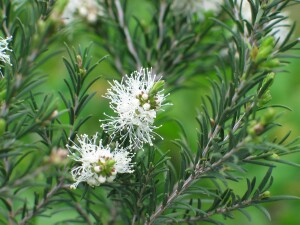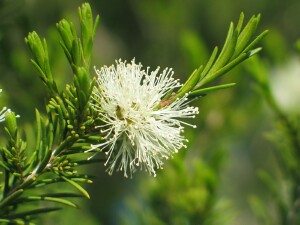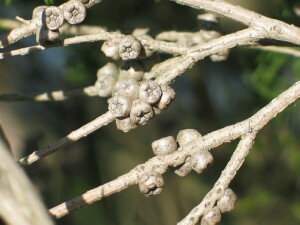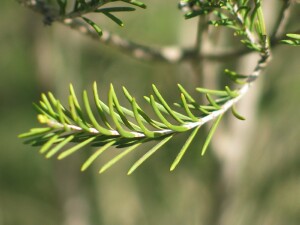Swamp Paperbark
Did You Know?
Swamp Paperbark is a clonal plant, which means that it can produce new stems from ‘root suckers’ (lignotubers). When you see a thicket of Swamp Paperbark you might think its multiple individuals, but it is likely clonal stems from one parent plant!

A dense shrub with pale white peeling, papery bark and numerous branchlets. The Swamp Paperbark grows upto 9m tall and has long needle like leaves.
Leaves
Leaves are arranged alternately, dark green in colour and linear in shape 5-18 mm long and 0.5-1.7 mm wide. Juvenile leaves are typically bright green.
Flowers
Cream/white flowers usually clustered in heads or spikes to 17 mm long and 10 mm wide.
Fruit/Seeds
Small woody loculicidal capsule opening at the summit with 3-4 valves. Woody capsules are typically persistent year round with seed released in pulse events.

What to Observe
- First fully open single flower
- Full flowering (record all days)
- End of flowering (when 95% of the flowers have faded)
- No flowering
- Fruiting

When and Where
When To Look
Flowers from September to November but fruit can be present year-round.
Where To Look
Widespread from coastal areas to swampy riparian zones. Swamp Paperbark is tolerant of flooding is particularly common on waterlogged soils and in drainage lines.

What Else?
Similar Species
|
Melaleuca parvistaminea (Rough-barked Honey Myrtle) is very similar but has rough, scaly bark, smaller flowers and does not exhibit clonal growth |

